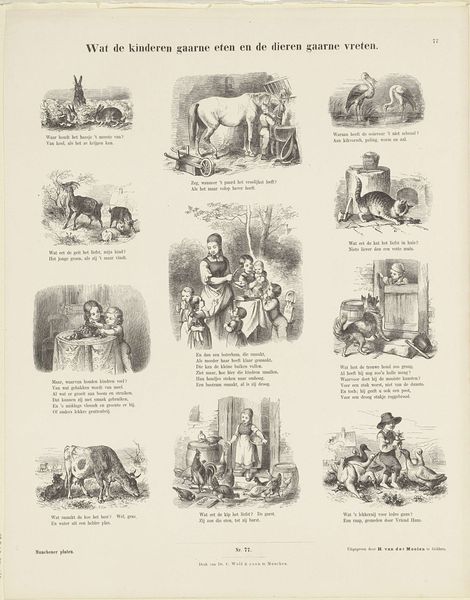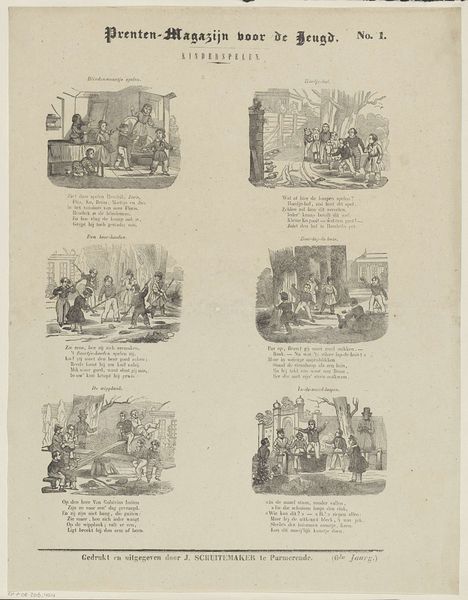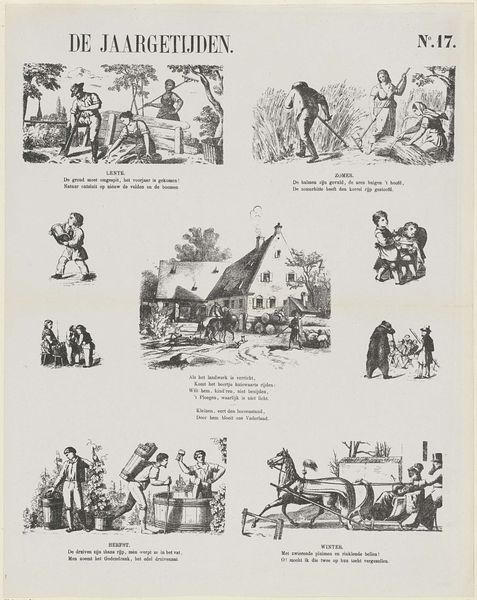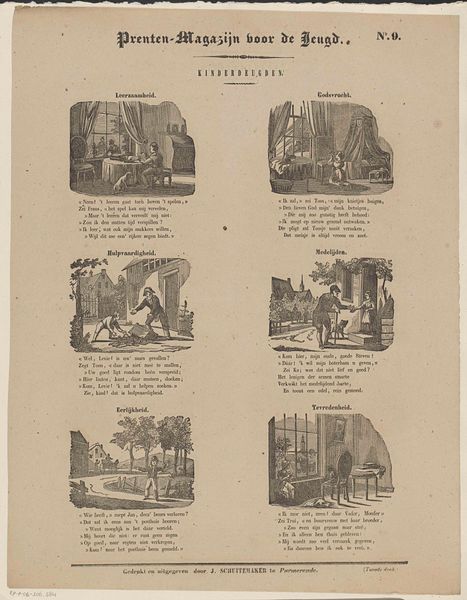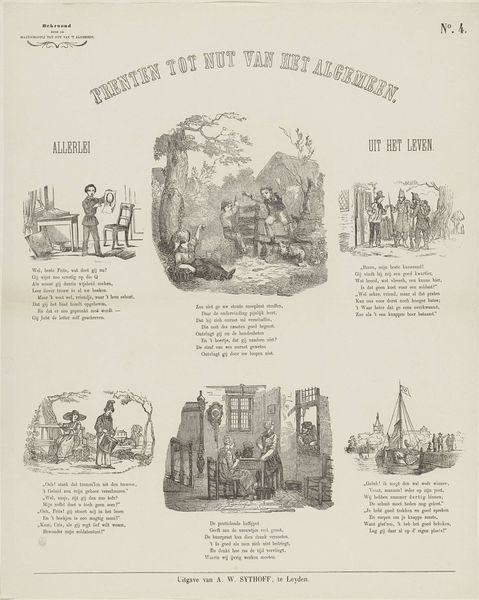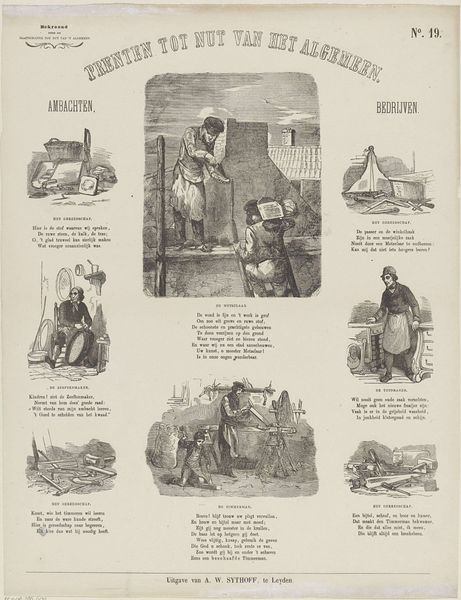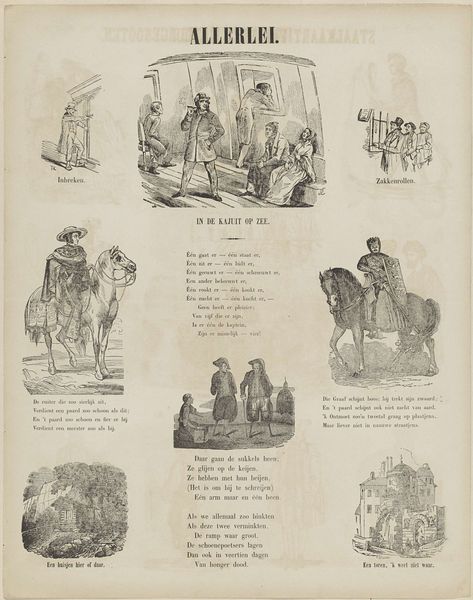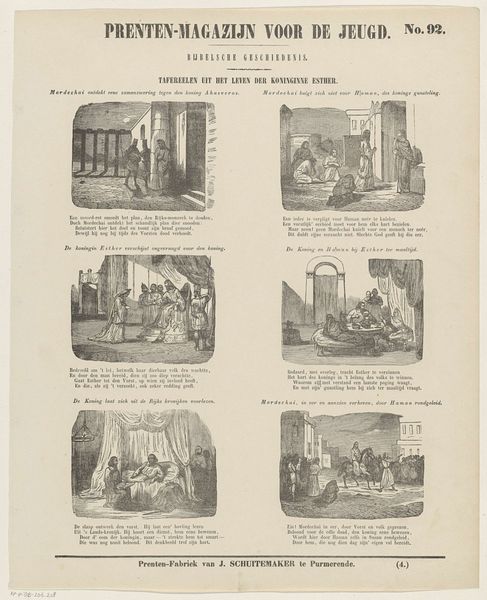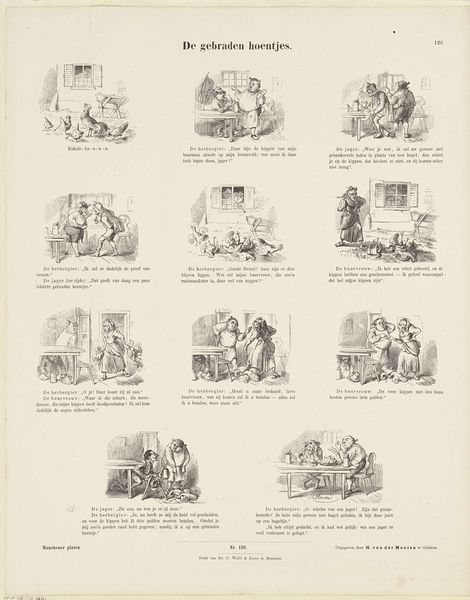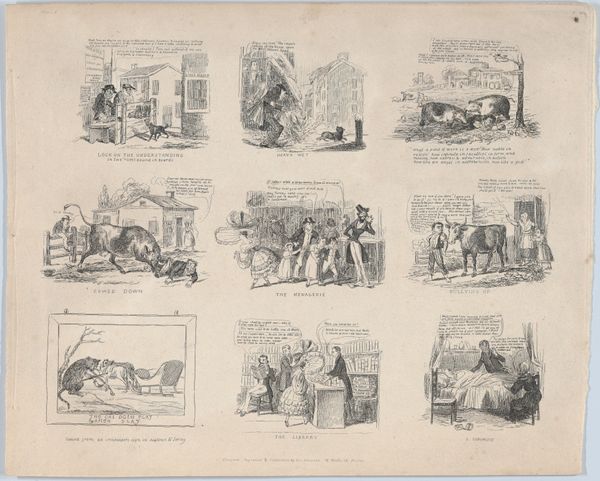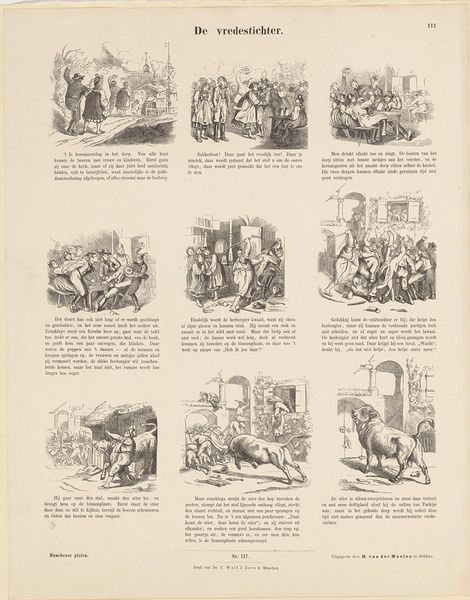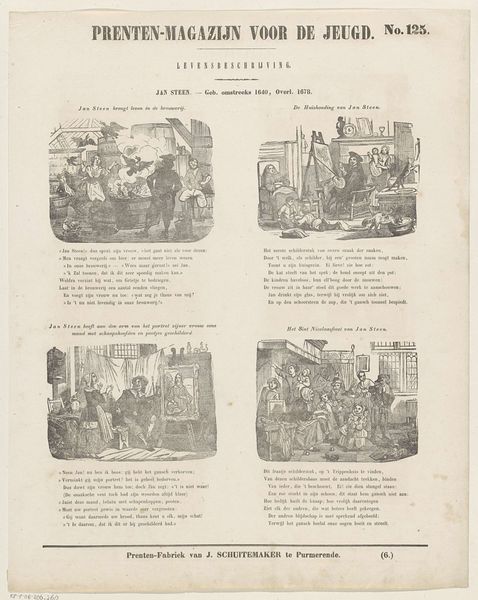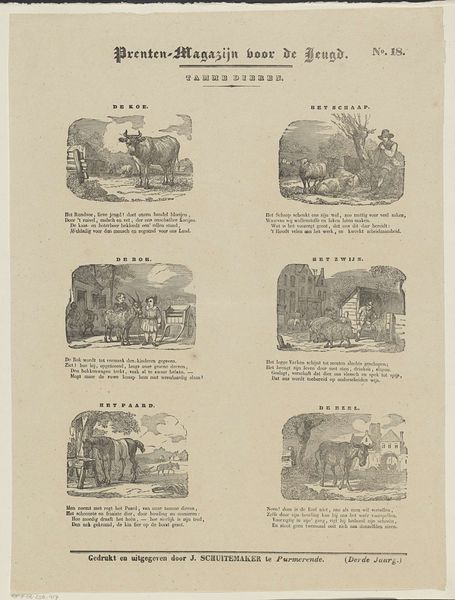
print, engraving
#
narrative-art
# print
#
old engraving style
#
landscape
#
folk-art
#
genre-painting
#
engraving
Dimensions: height 438 mm, width 344 mm
Copyright: Rijks Museum: Open Domain
Editor: This engraving, titled "De veldbouw" which translates to "Agriculture", created sometime between 1843 and 1920 by Ludwig Gustav Voltz, strikes me as a picturesque depiction of rural life. What jumps out is the almost encyclopedic arrangement of farming tasks. How might we interpret the intent behind this organized view of labor? Curator: That's a fantastic starting point. The piece visualizes labor itself, and demands we question its role within larger economic structures of the time. Are we meant to admire this "folk art" romanticizing peasant labor? Or, considering potential industrialization, is there a commentary on the changing relationship between humans and the land? How does this visual organization, each panel acting as a stage for specific acts, play into our understanding of land ownership and wealth distribution? Editor: I see your point. It is almost *too* organized, like a catalogue, potentially obscuring the difficult realities of farm work. Each scene, although bucolic, seems deliberately framed. Curator: Exactly! This framing, almost like separate chapters in a book, forces us to examine each activity—plowing, sowing, harvesting—in relation to the others. But let's go deeper; who is doing this work? Who benefits? Where is the agency and voice of those depicted within what is now labelled, almost dismissively, as "genre painting"? Considering how closely linked labour is with personal identity, particularly at this historical juncture, where might this association direct our inquiries regarding autonomy and socioeconomic hierarchies? Editor: That is an important call-out to consider issues of class. The individual images can be appreciated, but you suggest a crucial shift towards larger social narratives, asking whose story gets told and why. Curator: Precisely! Approaching Voltz's engraving through the lens of labour history empowers us to see beyond its aesthetic surface. We start to discern not only visual pleasure but potentially buried dialogues concerning power, and the romantic versus practical realities of a rapidly changing agrarian world. Editor: I’ll definitely consider the perspective you've offered about who the artwork presents versus what voices and circumstances may be left out or simplified. This reframes my reading entirely!
Comments
No comments
Be the first to comment and join the conversation on the ultimate creative platform.
